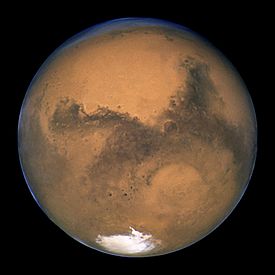Mars.jpg

Part 1 of 4 Parts
There has been a lot of media recently dedicated to colonizing Mars. Some critics of these plans say that it would make more sense to colonize the Moon first. The only way to prepare a world for human habitation is to make the environment more Earth-like which is referred to as “terraforming’. Some scientists in space industries believe that the Moon would be a better choice. It is close to Earth and has many factors that make it very appealing.
No matter how advanced our civilization on Earth becomes, we will still have to deal with the fact that Earth’s resources are finite. We usually think in terms of resources such as minerals, clear water, and breathable air. However, there is something that is even more fundamental and restrictive which is land area. No matter how thoroughly we develop, there is only a finite amount of inhabitable continental land area on Earth.
Although there may ultimately be floating cities on the seas and ocean, the finite land surface area of Earth ensures that we will have to leave our home planet if want our civilization to continue to expand. Many people have dreamed of living on another world. However, we have yet to find even a hint of life on any world beyond Earth. If we want a world suitable for use to live on, our only option will be to transform a presently uninhabitable planet into one that humans can survive on. We will have to terraform our new home. In spite of the popular sentiment that Mars is the best world to terraform, the Moon may be an even better option closer to home.
At first glance, it may appear that Mars is a much better choice for terraforming than the Moon. Mars already has large quantities of water on its surface. In the distant past, Mars had extensive liquid water on its surface. Mars is much larger than the Moon and it has a higher gravitational acceleration than the Moon does. Its atmosphere is thin but it is rich in carbon dioxide.
However, Mars also faces serious issues that the Moon does not. Mars is further from the Sun which means that it receives less energy from the Sun on every square meter of area. Mars’ atmosphere is a huge hazard with high winds, frequent sandstorms, and shifting dunes. Mars has no protective magnetic fields like Earth does. This means that it is bombarded by particles in the solar wind. If anyone living on the surface of Mars did not want to be given a lethal dose of radiation on timescales much less than a human lifetime, humans on Mars would have to move underground. The existence of huge lava tubes on Mars does make this a possibility.
None of these Martian issues is insurmountable. With a big enough investment of resources, almost anything is possible. However, the more resources that you have to bring with you to Mars in order to survive and thrive and to protect you from the harmful effects of all threats, the more difficult this will be.
Please read Part 2 next